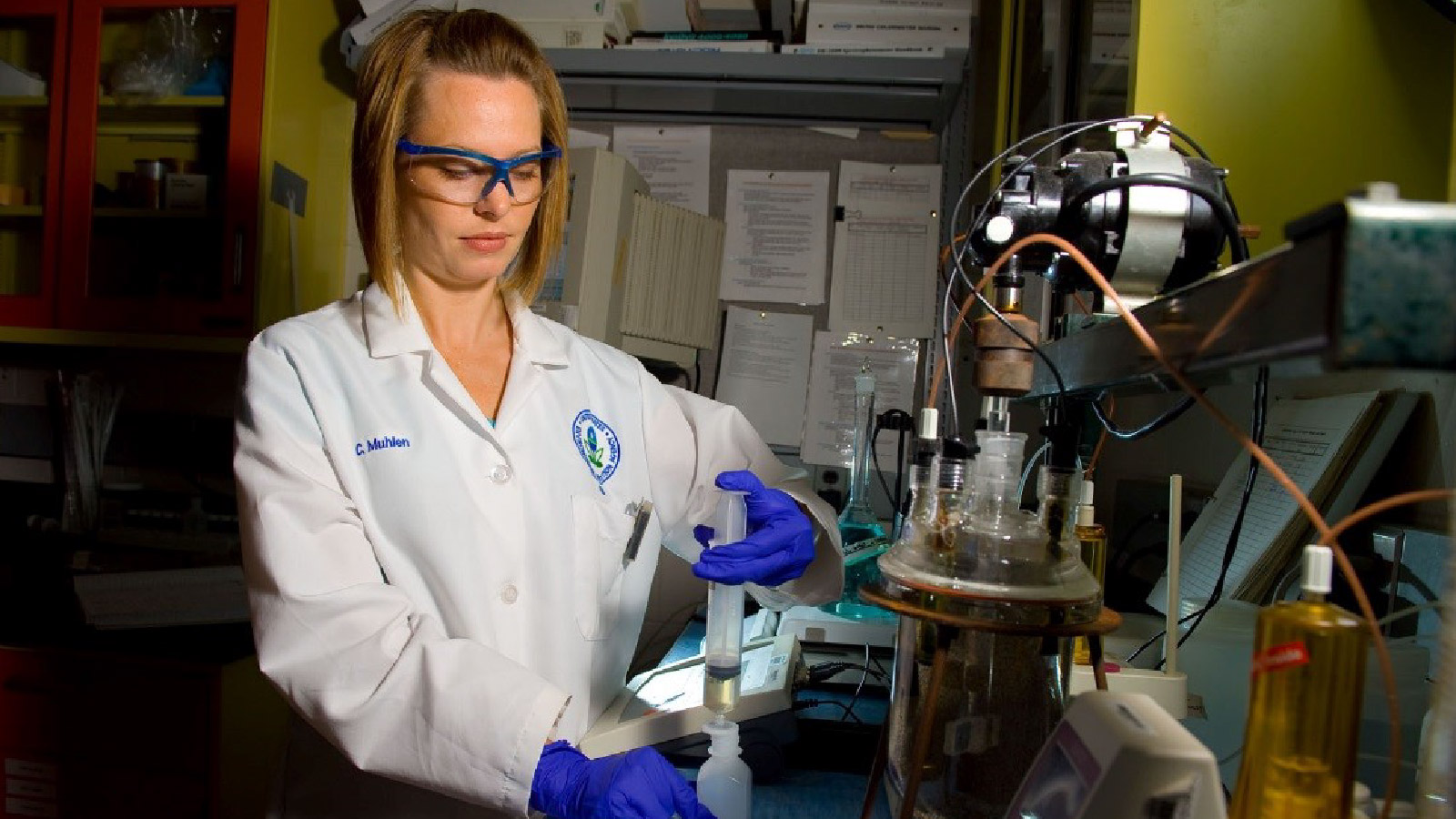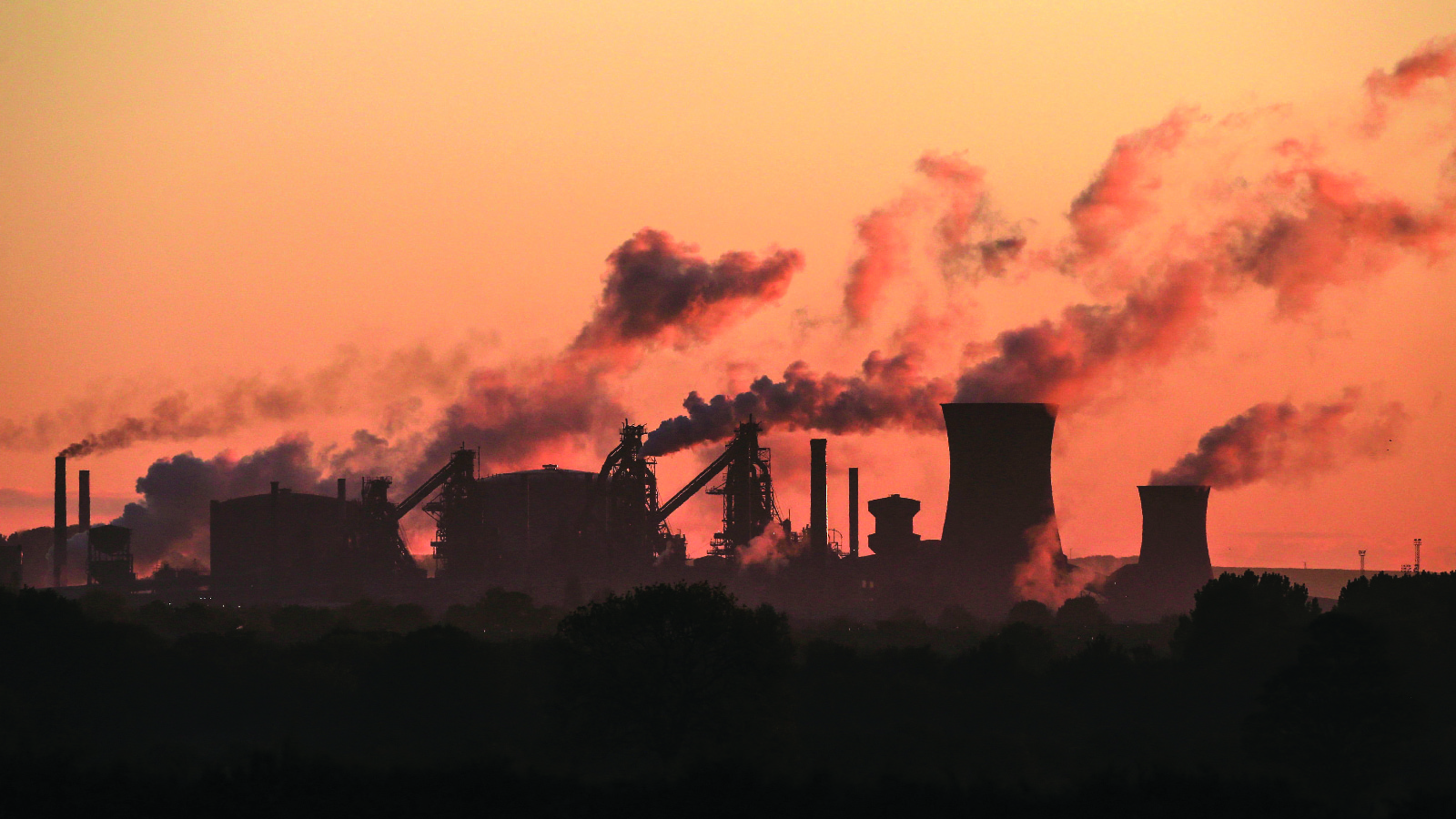How Regulations Help Fight Climate Change
Standards and regulations can help countries achieve climate goals, but they pose some drawbacks and challenges.
In the first half of the twentieth century, it was common for power plants and industrial facilities to be built in the heart of major cities. Picture it now: smokestacks rising over your local coffee shop. Emissions from those plants often reacted with water vapor in the air to form “smog,” a low-lying blanket of pollution. Smog contributed to asthma, difficulty breathing, heart conditions, strokes, and other serious health problems. In many cases, it was deadly. In 1952, heavy smog enveloped London for several days, killing twelve thousand people. Many cities deal with intense smog to this day. In New Delhi, for instance, air pollution is estimated to shorten the average life expectancy of residents by up to twelve years.
In the United States, public outcry against pollution led to the 1963 passage of the Clean Air Act [PDF]. At first, the act primarily charged states with controlling pollution and funded research programs to monitor air quality. But in 1970, the first of several substantial amendments to the act authorized the federal government to set and enforce standards on air quality by regulating pollutants like soot, carbon monoxide, and lead. States now had to meet federal government standards in their power plants, factories, and vehicle emissions. Anyone who violated those regulations faced fines or even prison sentences. That year, the Richard Nixon administration also created the Environmental Protection Agency (EPA) to produce and enforce federal environmental regulations.
Since the Clean Air Act was passed, the U.S. economy has tripled in size, but emissions of many federally regulated pollutants are down by 75 percent or more. Researchers estimate that each year, the Clean Air Act prevents hundreds of thousands of early deaths and millions of lost work- and schooldays due to pollution-related illness.
The Clean Air Act underscores how laws and regulations can help protect the environment and human health. Today, policymakers are also considering how environmental regulations can fight climate change, including by reducing pollution further.
What are environmental regulations?
One of modern government’s core functions is to regulate its citizens’ activities for their own well-being. Those regulations can be about anything from wearing seatbelts in cars to requiring safety procedures in manufacturing plants. Crucially for the climate, they can also determine environmental practices.
In the United States, Congress typically tasks federal agencies with regulatory responsibilities. Those agencies then develop detailed rules about how people and businesses should behave and standards for how certain goods and services should be produced and delivered.
Take the Clean Air Act. The law itself requires the United States to enforce national standards for air quality, but it doesn’t specify exactly how much of any pollutant can be emitted. Congress is not necessarily staffed with many scientific experts who would know just how much of a pollutant is safe.
Instead, it authorizes the EPA and its staff of experts to determine what air quality standards are necessary to achieve the law’s goals, and how local governments, companies, and individuals should behave to reach those standards. It also has the power to monitor and enforce those regulations. The EPA has the flexibility to update its standards based on new scientific data. That does not mean it has the final say in setting standards, however. Legal challenges to regulations can turn the interpretation of laws over to courts, which can overrule the EPA’s determinations.
The ability to set standards and regulations makes governments one of the most important entities in the fight against climate change.
What do environmental regulations target?
Let’s take a look at some standards and regulations today.
Vehicles: The transportation sector is responsible for 15 percent of global greenhouse gas emissions. Those emissions come from burning fossil fuels to operate planes, boats, trucks, and other vehicles. Many governments, including the United States, regulate the fuel efficiency of those vehicles. They require that new versions be able to travel at least a certain distance on a particular amount of fuel. For example, in the United States, Corporate Average Fuel Economy (CAFE) standard requires automakers to achieve a certain average standard of fuel efficiency across the different classes of vehicles it creates. For example, for cars made between 2024 and 2026, the average CAFE standard for passenger cars and light trucks was forty-nine miles per gallon of gasoline.
The U.S. government also sets a standard for how much CO2 cars emit per mile. The United States isn’t alone in those efforts. Other countries including China, Japan, and those in the European Union have also issued vehicle standards on fuel efficiency and emissions. They now cover over 85 percent of global passenger vehicle sales.
Fuel: Governments don’t just regulate how vehicles use fossil fuels, but also how polluting the fuel is itself. For example, the U.S. government requires that a certain amount of cleaner-burning renewable fuel (often biofuel) is mixed into the gasoline and diesel used for transportation and home heating oil. In recent years, around 10 percent of U.S. gasoline was the biofuel ethanol. Other countries mandate renewable fuel blends too. Notably, in Brazil, 27.5 percent of its gasoline has been made up of ethanol.
Power Plants: The energy sector is responsible for over one-third of global greenhouse gas emissions. In the United States, electricity generation accounts for 25 percent of the country’s emissions, mostly from burning coal and natural gas. The EPA issues guidelines on emissions of certain greenhouse gases for new and existing fossil fuel power plants based on the best technology available. In 2024, the agency released new standards. They set a requirement that any coal plant operating beyond 2039 will have to use carbon capture techniques to retain 90 percent of their CO2 emissions. Those standards are subject to legal challenges, however, and courts can amend or overturn them.
China has also imposed tighter restrictions on coal use in major cities. That has led to more than a 40 percent reduction in air pollution and contributed to a significant slowdown in carbon emissions growth. Still, China continues to show limited progress in slowing the construction of coal-fired power plants across the country as a whole. It was responsible for 95 percent of new coal power plants built in 2023.
Appliances: Governments can also reduce the demand for power by regulating appliances’ energy efficiency. The United States places federal standards on consumer products like boilers, washers and dryers, and other utilities. Those standards aim to make new appliances operate more efficiently to reduce energy demand. U.S. states themselves also have energy efficiency standards for buildings and appliances. Those codes require buildings to better use electricity for heating and cooling. The EU has also implemented widespread efficiency standards. In 2023, it adopted a goal of reducing energy consumption by nearly 12 percent by 2030.
Hydrofluorocarbons (HFCs): Often used in items like refrigerators, air conditioners, and aerosol sprays, HFCs are a type of greenhouse gas commonly called super pollutants. They can be hundreds to thousands of times more potent than CO2. In 2020, the EPA adopted regulations to gradually phase those chemicals out of use. If alternative substances are already available, the regulations require that companies adopt them. In products where HFCs are still essential, the EPA expects companies to reach 15 percent of their baseline levels by 2036. Those companies will be allowed to use fewer and fewer HFCs in their products each year until that goal is met.
Challenges for environmental regulations
Regulations can be a valuable tool to help address climate change, but they come with challenges. For one, they can be complex and difficult to implement. Often, they require government agencies to closely monitor thousands of different enterprises and study vast amounts of data. That can demand a lot of time and resources. It can also make regulations tricky to enforce.
For example, Brazil’s Forest Code includes strict laws limiting development in the Amazon rainforest. However, the responsibility for carrying out many of those laws has fallen on landowners themselves, with little government oversight. Many farmers have claimed they weren’t even aware of any restrictions on how they use their land.
Regulations can also be costly for businesses. Changing the way a product is made or adopting new technology can be expensive, and the government won’t necessarily foot the bill. If regulations are too costly to implement, they can disrupt some businesses and result in job losses. Some companies also claim that environmental regulations can hurt their ability to compete internationally. Costly regulations on domestic businesses could give a competitive advantage to foreign businesses in countries with looser regulations. (Cross-border adjustment mechanism policies are meant to address that type of concern.)
Those drawbacks can lead companies to resist regulations, lobbying governments against them, challenging their validity in courts, or seeking ways to bypass them—either by moving their production to less-regulated countries or by misreporting their activities. In 2015, for example, the car manufacturer Volkswagen was found to have installed software in some of its cars designed to put the engine in a lower-power mode during emissions tests. The result was that the cars emitted up to forty times the EPA’s acceptable limit for nitrous oxide pollutants. After it was caught, Volkswagen had to pay billions of dollars in fines and penalties, and multiple executives faced criminal charges for their actions.
Given such challenges, regulatory agencies like the EPA account for the economic costs of regulations and incorporate flexibility that can reduce economic impacts. Those include rigorous cost-benefit analyses [PDF] for any proposed regulations, where the benefits of a new rule generally have to outweigh the costs. They also tend to use gradual implementation periods that give businesses time to adjust to new regulations.
Some market-based environmental policies, like cap-and-trade systems, are designed to incorporate even more flexibility by giving businesses allowances for certain pollutants that they can trade or sell. Instead of imposing specific practices and standards directly, they are designed to create incentives for people to voluntarily change their activities.
Environmental regulations often pose trade-offs. They can be costly and difficult to enforce in the near term, but they can safeguard against far worse consequences in the future.




